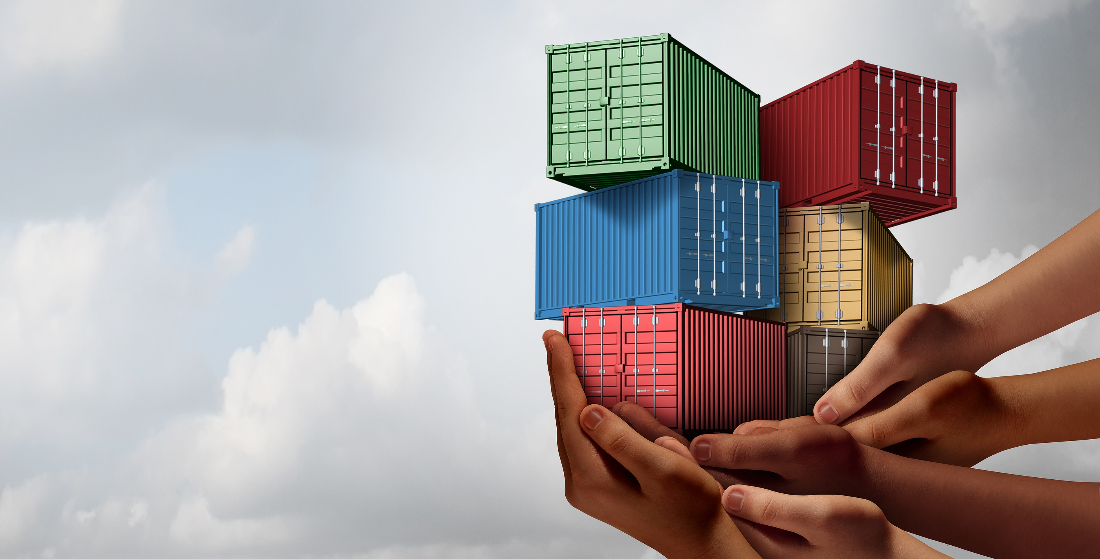APAC trade flows get a boost with RCEP pact
The recent signing of the RCEP creates the world's largest trading bloc. But, while warmly welcomed to cut red-tape constricting trade, despite its size it is not seen as the game changer it could have been.

With the increased volumes of trade protectionism that have marred much of global trade in recent years the signing of The Regional Comprehensive Economic Partnership (RCEP) on 15 November by 10 South-East Asian countries (members of Asean), as well as South Korea, China, Japan, Australia and New Zealand comes as something of a rainbow of hope to boost trade flows in the region. This free trade pact has not been without its challenges however – having been through some 30 rounds of negotiations and over eight years in the making to get to this point.
The RCEP is now the world's largest trading bloc, covering nearly a third of the global economy. The new free trade bloc will be bigger than the US-Mexico-Canada Agreement and the European Union combined. Members of the RCEP make up nearly a third of the world's population and account for 29% of global gross domestic product.
The RCEP is expected to eliminate a range of tariffs on imports within 20 years. It also includes provisions on intellectual property, telecommunications, financial services, e-commerce and professional services. Many of the countries within the RCEP already have free trade agreements (FTAs) with one another – but often products are still hit by tariffs. The RCEP is expected to help eliminate these and simplify trade flows. And one area that could benefit many of the countries within the RCEP is that of ‘rules of origin’ of goods, which will allow many products with multiple country origin of parts/components to be exported/re-exported free of duties or tariffs.
So, a trade pact to shout from the rooftops? Perhaps and perhaps not. All trade pacts have their limitations, their positives and negatives. In the case of the RCEP one only has to look at some of the current trade relations between certain countries - ie Australia and China – to realise that it is never going to be plain sailing.
Over the last couple of years, trade and political relations between Australia and China have deteriorated in certain areas leading to China cancelling contracts and many Australian exporters/companies losing out. There is a possibility that even within RCEP China may still boycott some Australian commodities/products.
Before the signing of RCEP, speaking at an online event at the Peterson Institute of International Affairs, Australia's former Prime Minister Malcolm Turnbull said the new deal was old-fashioned. He added: "There'll be some hoopla about the signing and the entry into force of RCEP. I mean RCEP is a really low ambition trade deal. We shouldn't kid ourselves."
But the China Premier Li Keqiang has described the pact as "a victory of multilateralism and free trade". He also noted that: "Under the current global circumstances, the fact the RCEP has been signed after eight years of negotiations brings a ray of light and hope amid the clouds."
India was initially part of the RCEP negotiations, but pulled out last year, over concerns that lower tariffs could damage local producers. Signatories of the deal said the door remained open for India to join in the future.
Interestingly RCEP does not include the US, which chose not to engage in the pact largely because of it being viewed as an extension of China's influence in the region. Then again, back in 2017 President Trump pulled the US out of the Trans-Pacific Partnership (TPP) – ironically a trade pact that was supposed to be set up to counter China’s influence.
The TPP was originally being planned between Australia, Brunei, Canada, Chile, Japan, Malaysia, Mexico, New Zealand, Peru, Singapore, Vietnam and the US (then backed by President Obama). With the withdrawal of the US in 2017, the TPP could not be ratified. However, the remaining members went on to form the Comprehensive and Progressive Agreement for Trans-Pacific Partnership (CPTPP) in 2018. The CPTPP cut tariffs and included provisions on labour and the environment further than the original TPP had proposed.
Comparison of regional trade blocs, 2019
| Year established | Member states | Population (millions) | Share of world GDP (%) | Share of world trade (%) |
RCEP | 2020 | 15 | 2,290 | 29.1 | 28.7 |
CPTPP | 2018 | 11 | 504 | 12.9 | 15.3 |
ASEAN FTA | 1992 | 10 | 654 | 3.5 | 7.4 |
CIS FTA | 2011 | 8 | 244 | 2.4 | 3.1 |
EC/EU Customs Union | 1958/94 | 28 | 513 | 21.9 | 33.1 |
Mercosur | 1991 | 5 | 293 | 3.1 | 1.8 |
NAFTA/USMCA | 1994 | 3 | 493 | 27.6 | 13.2 |
Source: Australian Strategic Policy Institute
At the Hinrich Foundation, research fellow Stephen Olson, stresses that the RCEP needs to be kept in perspective. In an article entitled ‘Keep RCEP in perspective’ he says: “The RCEP… is a welcomed, major initiative to reduce trade and investment barriers, at time when protectionist measures are on the rise. But despite its evident upsides, RCEP is not going to be a game changer.
“To be clear though, RCEP will be the first FTA between some members, for example Japan and South Korea. But the amount of additional market opening that will take place between, for instance, Indonesia and Vietnam, where trade agreements are already in place, is negligible.
“To the extent however that RCEP simplifies procedures (such as through a common rule-of-origin) or minimises red-tape, thereby allowing more SMEs to participate in trade, it should be applauded. FTA utilisation rates in the SME-dominated region are abysmal – by some estimates, roughly 25%. But while progress in boosting SME uptake is welcome, the gains are unlikely to be overwhelming.”
Olson also points out: “And even on tariff cutting, the bar was not set exceptionally high. For example, duties on roughly 39% of Asean’s food exports will not be removed. And for those hoping the agreement would substantially open Japan’s agricultural market, tariffs will remain in place for rice, wheat, beef, pork, dairy, and sugar. The upshot? Depending on one’s precise definition, referring to RCEP as a ‘free’ trade agreement might arguably be stretching things a bit.”
In part of his conclusion Olson states: “Supporters of open trade and investment should welcome RCEP, especially for the encouraging signal it sends at a time when the cause of trade liberalisation is on its back foot. The power of its example might jolt other countries into action and that alone would be a net gain. But be realistic about expectations.”
From a commercial banking perspective, the RCEP is being viewed positively in many quarters. And the cutting of red-tape along with the potential for increased trade flows and financing opportunities for commercial banks and alternative lenders can only be seen as positives.
At HSBC, Stuart Tait, regional head of commercial banking, Asia-Pacific, comments: “RCEP may prove to be the tonic Asia needs to recover from the pandemic-induced slump. Although international trade continues to face uncertainty, the signing of RCEP underscores the belief that market openness will lead to greater economic growth for more.”
He adds: “Intra-Asian trade, which is already larger than Asia’s trade with North America and Europe combined, will continue to power global economic growth and pull the economic centre of gravity towards Asia. We hope RCEP members will build on the progress they have made and further liberalise trade and investment in the region.”
The bank also outlines other positive features of the RCEP:
- RCEP can provide a pan-Asian basic standard for trade that goes beyond the terms provided by the WTO (eg in reducing tariffs), supporting regional integration and engaging emerging markets and developed economies;
- In the long run, RCEP could prepare a solid foundation for further liberalisation and integration in Asia;
- Asian policymakers have engaged in constructive waves of liberalisation unilaterally, via bilateral and regional accords, and at the global level via the WTO;
- Recent regional and bilateral trade accords are delivering tangible results for Asian trade; further gains feasible if facilitation measures and trade deals can tackle non-tariff barriers;
- There is room to improve the quality of liberalisation to increase engagement in high-standards trade agreements that take into account sustainability issues and concerns about globalisation even as they significantly improve market access.
Now time to get up to speed with the markets
Here's a selection of original TXF Subscriber articles recently published
Changhua 1: Another step forward in Taiwan's offshore wind evolution
With Orsted’s potential equity partners in its Changhua 1 offshore wind project wanting to eye loan agreements before debt signing, the project financing is nearing close. The facility is similar to its Taiwanese offshore wind precursors in many ways – but is also expected to be another small evolution in tenor and pricing.
TXF Global Commodity Trade Finance Industry Report 2020
This year’s edition of TXF’s Global Commodity Trade Finance Industry Report has landed, offering a thorough and independent look into the impact of the past 12 months on a sector which has endured a period of unparalleled volatility.
More details emerge on Taif ISTP financing
New information has come to light about the financing of the $85 million Taif Independent Sewage Treatment Plant (ISTP) in Saudi Arabia, which reached financial close last week after six months of delays caused by logistical difficulties accompanying the Covid-19 pandemic.
Gigaclear capex loan syndicated
UK rural fibre developer Gigaclear’s £525 million seven-year bullet loan – underwritten in March by joint bookrunners ABN Amro, NatWest, Lloyds and Santander – has added ING Bank as lead arranger in syndication. Gigaclear, which is owned by Infracapital and Railpen, signed the deal on 28 October.
Udenna signs on Malampaya stake acquisition debt
Udenna Corporation – via special purpose company UC Malampaya Philippines – has raised a $425 million senior secured reserves-based loan to finance its acquisition of Chevron’s 45% non-operated interest in the SC38 service contract which contains the Malampaya gas and condensate field, offshore Palawan Island in the Philippines.
Cuchilla Grande consortium tapping IDB Invest for road PPP debt
The Circuito Seis Cuchilla Grande consortium – comprising ROVER ALCISA and Construcciones Viales y Civiles – has approached IDB Invest for a $45 million financing to partially fund $76 million of works on its 20-year availability-based Corredor Vial Circuito 6 road PPP concession in Uruguay.





